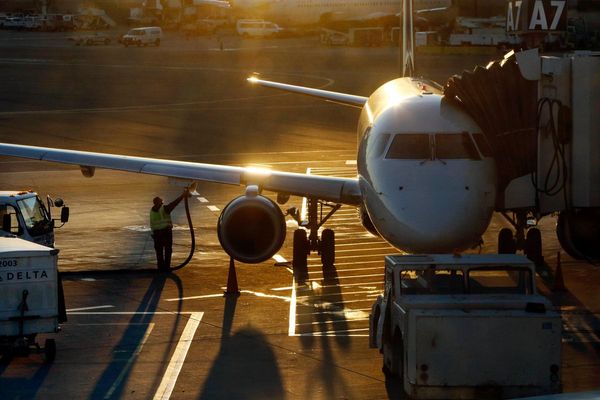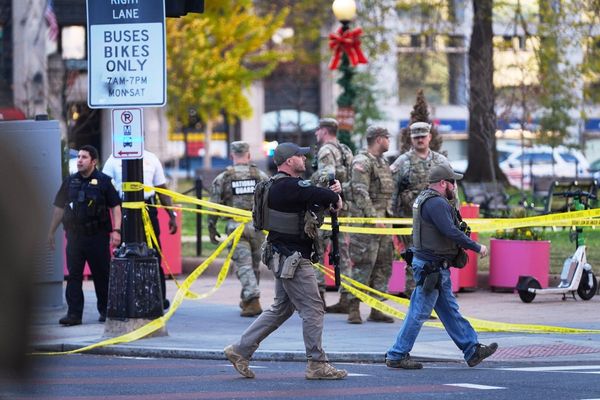
The 2023 NBA draft is drawing near. This year the Los Angeles Lakers will have the No. 17 and No. 47 picks, which will give them an opportunity to potentially add two useful, cost-controlled players to their roster.
Those picks could also be used to trade for a player already in the NBA who could help them right away, perhaps even a star.
Los Angeles has been rather successful at finding diamonds in the rough in the draft or among undrafted free agents in recent years. However, it has also had its share of draft blunders, as has just about every other team in pro sports.
Here are the five worst draft picks it would likely love to redo.
1992 — Anthony Peeler
By no means was Peeler, the No. 15 pick in the 1992 NBA draft, a bad player. He played 13 seasons in the league, and he proved a very reliable 3-point shooter.
But this was a poor pick mostly because the Lakers could’ve taken Latrell Sprewell, who ended up being taken at No. 24 by the Golden State Warriors. Sprewell turned into a four-time All-Star who averaged 18.3 points a game for his career.
1993 — George Lynch
Lynch was taken with the No. 12 pick, and he was fresh off helping lead the University of North Carolina Tar Heels to the national championship in the spring of 1993.
However, the forward did virtually nothing of note in the NBA, averaging 6.6 points and 5 rebounds a game for his career.
Instead, L.A. could’ve taken Sam Cassell, a 6-foot-3 guard who went at No. 24 to the Houston Rockets. He immediately helped them win back-to-back world championships and had a very productive 15-year career.
Luckily, the Purple and Gold gained their own productive point guard in the second round when they took Nick Van Exel with the No. 37 pick.
1981 — Mike McGee
In 1981, the Lakers were one year removed from their first championship of the Showtime era. But they were at risk of being a one-hit wonder; they had just lost in the opening round of the playoffs.
They needed reinforcements, and Jerry West, then a scout, and executive Bill Sharman were in love with forward Larry Nance, according to Jeff Pearlman’s comprehensive book on the Lakers of that era.
However, head coach Paul Westhead preferred McGee, an instant offense guard from the University of Michigan, and thus McGee became the team’s pick at No. 19. He could score in bunches off the bench, but he did virtually nothing else of note.
Nance, meanwhile, was taken one pick later by the Phoenix Suns. A high-flying 6-foot-10 power forward, he instantly became a good scorer, rebounder, defender and shot-blocker and made three All-Star teams.
All through the 1980s, the Lakers’ one weakness was the power forward position. One has to wonder how much stronger arguably the greatest team in NBA history would’ve been with Nance at the 4 instead of Kurt Rambis or A.C. Green.
1999 — Devean George
When the Lakers hired Phil Jackson to be their head coach in 1999, they had a number of personnel needs. One of them was youth and athleticism.
With the No. 23 pick in that year’s draft, they took George, who had played for Augsburg University (then known as Augsburg College), a small, obscure Division III school in Minneapolis. Although he was considered by Jackson to be brimming with athletic talent, he never really amounted to much.
Within a couple of years, George occasionally provided decent spot-up 3-point shooting, but he was a reckless decision-maker with the ball and was below average in every other facet of the game.
One pick later, the Utah Jazz took Andrei Kirilenko, a 6-foot-9 Russian who could score, rebound and play excellent defense while manning either forward spot.
As the Shaquille O’Neal-Kobe Bryant era wore on, the Lakers gradually became thinner and older, which was a major reason that era ended prematurely. Perhaps Kirilenko could’ve extended their run and also made them more competitive after O’Neal left in 2004.
2017 — Lonzo Ball
Perhaps there is a bit of recency bias here. But by now it’s clear the Lakers messed up by taking Ball with the No. 2 pick in 2017.
At the time, then-executive Magic Johnson was seemingly mesmerized by Ball’s point guard abilities and his production during his lone season at the University of California, Los Angeles. A big reason was the influence of Ball’s loquacious father, LaVar Ball, who infamously said that his son was better than Stephen Curry, then a two-time MVP and NBA champion.
Johnson, as well as many Lakers fans, fell for the hype the elder Ball single-handedly created and expected the youngster to become a superstar, if not a Hall of Famer.
Although the younger Ball occasionally flashed some promise, he never quite panned out into even a borderline All-Star, even though he’s been a pretty good and useful player. Then there’s the matter of his many injuries, including the meniscus injury he suffered in January 2022 that is currently threatening his career.
Instead of drafting the younger Ball, L.A. could’ve had Jayson Tatum, who went at No. 3 to the Boston Celtics. Or they could’ve gone with guard De’Aaron Fox, whom the Sacramento Kings took at No. 5 and is now a bona fide All-Star.
Or how about Donovan Mitchell, who was the No. 13 pick and averaged 28.3 points a game this year for the Cleveland Cavaliers?







